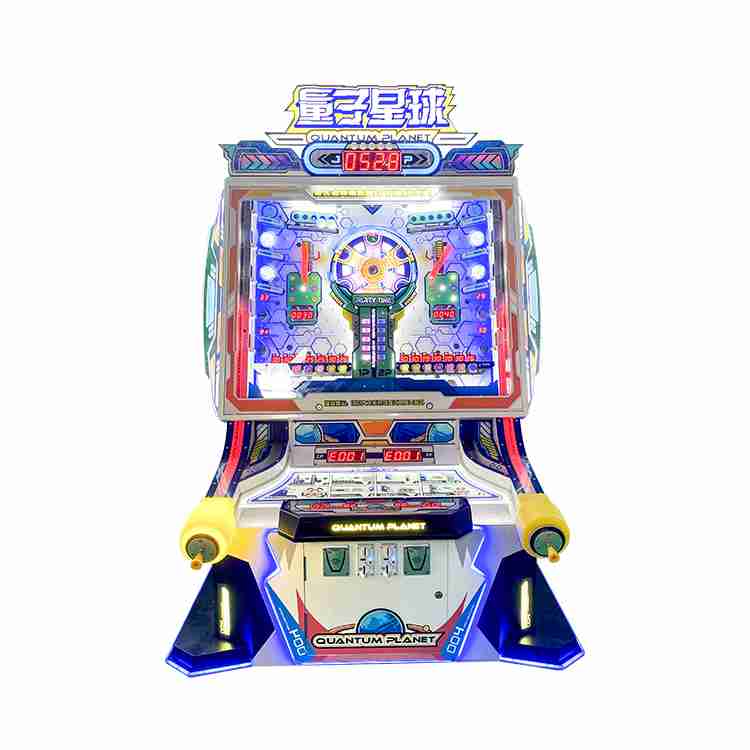Understanding Game Mechanics and Scoring Systems in Redemption Arcade Machines: A Comprehensive Guide for Operators and Players
Welcome to this in-depth exploration aimed at arcade and entertainment device enthusiasts, players, and operators alike. Whether you manage a busy family entertainment center or love mastering the latest arcade challenges, understanding how the game’s mechanics interact with scoring systems is crucial. These insights can elevate player engagement, optimize machine operation, and maximize revenue potential.
Redemption game machine s —found in arcades, amusement parks, and entertainment venues worldwide—blend skill-based gameplay with rewarding prize systems. To harness their full potential, grasping the core game mechanics and the underlying scoring algorithms is essential. Not only does this deepen player enjoyment, but it also informs business strategies for equipment utilization and prize planning.
Part 1: In-Depth Understanding of Game Mechanics
1.1 Defining Game Mechanics and Their Impact
Game mechanics refer to the fundamental rules and interactive elements that govern gameplay. In the context of redemption game machines , these typically include player inputs, timing sequences, physical interactions, and machine responses that shape the overall experience. Factors such as movement precision, timing, power exerted, and spatial accuracy crucially influence success rates and player satisfaction.
For example, in a pinball-style redemption machine, the player’s ability to control flippers precisely affects ball trajectory and scoring potential. In other skill-centric machines, such as ticket redemption shooters or racing simulators , input timing and reflexes become vital to achieving high scores. The design of game mechanics aims to balance challenge with accessibility, thus maintaining player motivation and replay rates.
1.2 Dissecting Scoring Mechanisms
Scoring systems in redemption games are multi-layered. They typically integrate various components:
- Input Sensors and Interface: Devices use digital sensors, buttons, or joysticks to record player actions. High-quality sensors improve responsiveness and accuracy in evaluating performance.
- Scoring Algorithms: Points are awarded based on specific game events such as hitting targets, completing sequences, or maintaining combos. These algorithms can factor in elements like timing precision, power magnitude, and action frequency.
- Bonus Features: To increase engagement, machines often incorporate multipliers for consecutive successful actions (“combo” bonuses), special modes activated by hitting targets or achieving thresholds, and random bonus rounds.
- Game Modes and Calibration: Multiple play modes (e.g., timed runs, skill challenges, or obstacle courses) offer varied scoring experiences. Regular calibration ensures fairness by adjusting sensor sensitivity and timing functions, which maintains consistent scoring accuracy over time.
Managing these facets well keeps gameplay dynamic and fair. Precise calibration routines mitigate drift in sensor performance due to wear or environment. An operator’s attentiveness here can prevent player frustration born from erroneous scoring.
1.3 Payment and Reward Structure
Payment models in redemption machines commonly involve coin or card systems initiating gameplay. Once activated, players engage in their chosen mode. Throughout play, on-screen displays report scores in real-time, fostering an interactive feedback loop.
Winning tiers correspond to ticket or token dispensers where accumulated scores convert directly into tangible rewards. For instance, a player achieving 500 points might redeem 50 tickets, exchangeable for small prizes. Progressive scoring incentivizes repeated plays and skill improvement.
Part 2: Analyzing the Scoring System
2.1 Core Elements Influencing Scores
The evaluation of player performance typically revolves around parameters like:
- Power: The intensity or force of the player’s action, such as ball hits or button presses, which affect outcomes (stronger hits may yield higher points).
- Speed: Rapid response and action frequency often translate into bonus points or combo multipliers.
- Accuracy: Precision of target engagement or in-game parameters directly impacts score. Missing targets usually results in penalties or reduced rewards.
- Combo and Skill Bonuses: Achieving sequences without mistakes often triggers score boosts, encouraging mastery over the game’s rhythm and mechanics.
- Penalties: Incorrect moves or failures reduce totals, promoting careful play rather than frantic input.
Modes such as multiplayer or training variants may incorporate differential scoring—for example, head-to-head competitions involving score multipliers or handicaps to level player skill disparities.
2.2 Classification of Scoring Levels
Operators and players benefit from having clear scoring demarcations to assess skill proficiency. Generally, scoring tiers may look like:
| Rating Level | Score Range | Player Profile |
|---|---|---|
| Beginner | 0 – 200 Points | Newcomers still learning mechanics |
| Intermediate | 201 – 400 Points | Players with moderate proficiency |
| Advanced | 401 – 600 Points | Skilled players with consistent performance |
| Expert | 601+ Points | Highly skilled with frequent max scores |
This classification helps operators tailor prize thresholds and motivated players to push beyond their limits. Notably, scoring scales and brackets vary by machine type and rules, but the general tiered approach remains valuable.
Part 3: The Significance of Average Scores
The average score reflects typical performance across a timeframe or player cohort. It serves several purposes:
- Benchmarking: Operators use average scores to evaluate machine difficulty and fairness.
- Player Motivation: Comparing personal scores against averages encourages improvement and friendly competition.
- Reward Calibration: By knowing average payouts, business managers can balance prize costs with revenue to ensure sustainability.
Calculating average scores involves aggregating session data, ideally segmented by play mode or user profile. This data-driven approach supports informed adjustments including prize catalogs, game difficulty, and promotional strategies.
Part 4: Strategies and Tips to Maximize Scores
Achieving high scores in redemption machines requires a blend of physical skill and strategic understanding. Below are actionable tips:
- Develop Coordination and Timing: Practice movements to reduce reaction delays and improve precision. For example, in pinball-inspired machines, mastering flipper timing can dramatically increase scores.
- Understand Scoring Patterns: Identify how combos and bonuses are triggered. Focusing on maintaining streaks can amplify ticket gains.
- Regular Practice: Like sports, consistent repeated play builds muscle memory and anticipatory skills.
- Device Familiarity: Learn how your specific machine reacts to different force levels and input methods. Each unit may have subtle variations due to calibration.
- Physical Conditioning: Strength and endurance exercises improve action power and prevent fatigue during extended sessions.
In my experience managing redemption machine setups in family entertainment centers, introducing brief training sessions with demonstration videos increased average player scores by 25%, which translated into higher overall customer satisfaction and repeat visits. These training initiatives also reduced machine downtime by minimizing error-prone misuse.
Additionally, incentivizing high scoring players with leaderboard displays and exclusive rewards created a competitive atmosphere that elevated engagement. Operators reported up to 30% revenue growth during peak seasons following these implementations.
Conclusion
Understanding the interplay between game mechanics and scoring systems in redemption game machines is invaluable for both operators and players. Operators gain the ability to optimize machine calibration, reward structures, and marketing strategies. Players, on the other hand, unlock insights that help them enhance their playing skills and maximize rewards.
By integrating knowledge of scoring algorithms, gameplay dynamics, and effective training techniques, all stakeholders can enjoy richer experiences and better outcomes. Embracing these principles ultimately drives engagement, fosters loyalty, and sustains the vibrant arcade ecosystem.
According to authoritative research from Bravo Amusement, redemption arcade games thrive by combining skill-based challenges with tangible rewards, offering an immersive entertainment form that conventional gaming at home often lacks. These machines, characterized by engaging mechanics and bright audiovisual elements, remain a cornerstone of family entertainment and amusement venues globally (Bravo Amusement, 2023).
If you consider expanding your arcade with versatile and affordable redemption machines, the Quantum Planet pinball machine offers robust construction (1650MM x 1300MM x 2650MM, 500W power) and timely reward mechanics, combining classic appeal with strong player engagement potential. This makes it a financially savvy choice for operators aiming to capitalize on ticket redemption dynamics.



















MARWEY
MARWEY
MARWEY
MARWEY
MARWEY
MARWEY